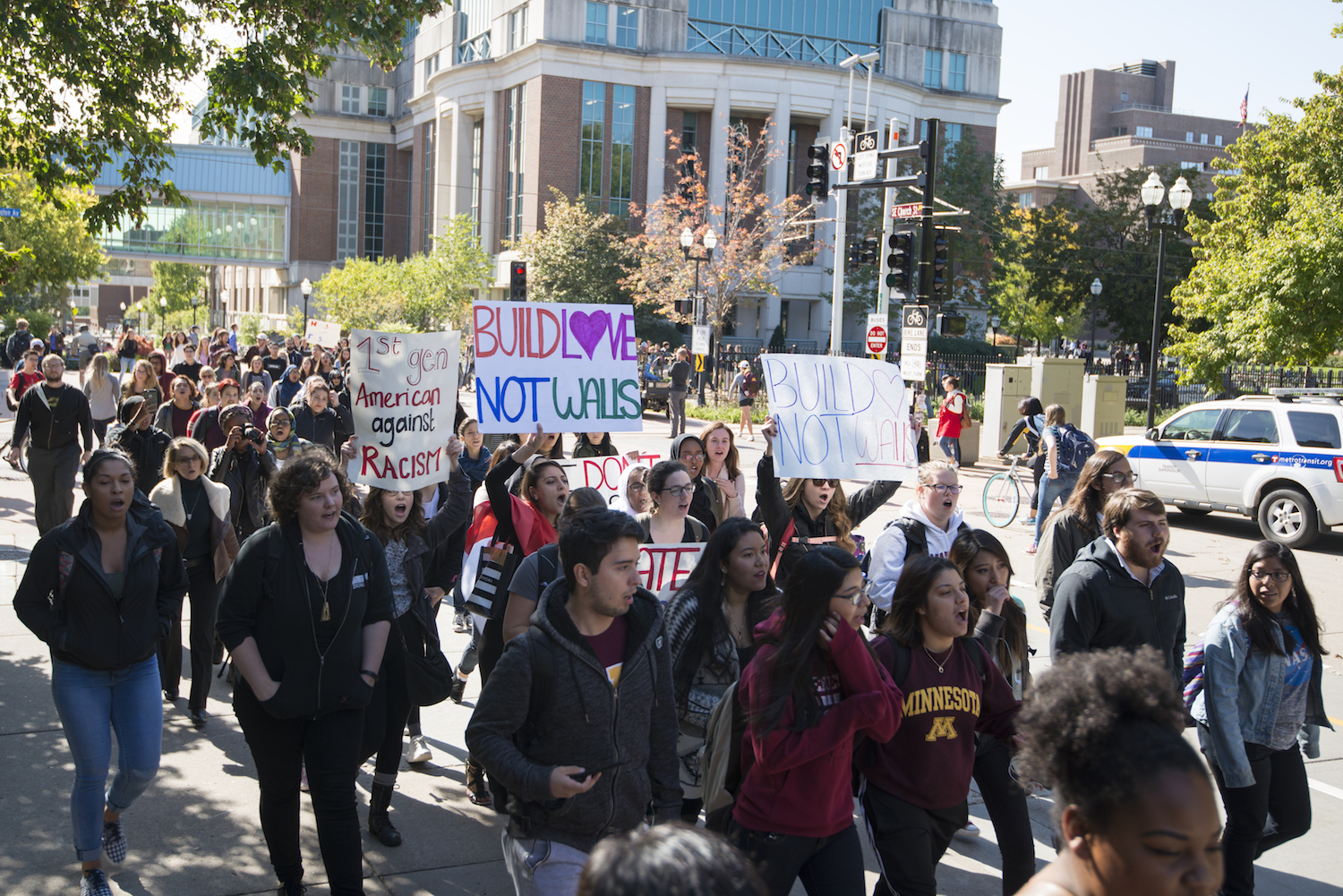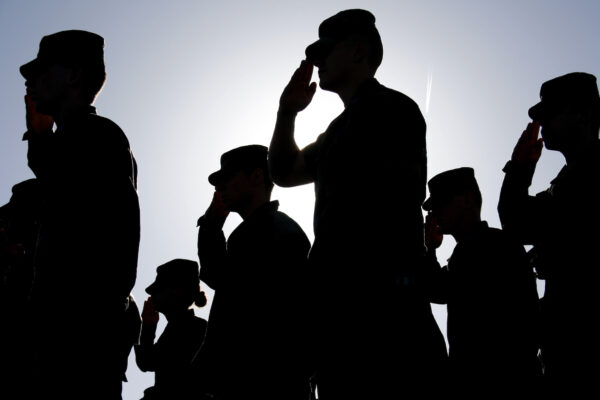Cassie Barnhardt of the University of Iowa and Kimberly Reyes of the University of Michigan on the need for campus leaders to engage student activism so higher education can continue to be an agent of social change.
This is the latest post in a series sparked by recent student protests and the national dialogue on diversity and inclusion.
This past November, the country witnessed a watershed for American student activism at the University of Missouri, now known across the country by its familiar name, Mizzou. In response to a series of racial incidents on campus, protests coordinated by the student activist group ConcernedStudent1950, including a powerful boycott from the university’s Black football players, ended in the resignation of both the president and the chancellor.
While multiple matters drove the Mizzou students’ calls for change, concerns regarding the racial climate were certainly at the top of their list, motivating them to mobilize. The racial turbulence and injustice surrounding the events in Ferguson, MO the previous year also had left an imprint on the Mizzou student community, a campus comprised of upwards of 60 percent Missouri residents.
Links between the broader social context of what is happening off campus and students’ on-campus activism have long been a means for students to personalize, contextualize and make sense of what it means to pursue social change. The events at Mizzou helped galvanize nascent efforts at other universities and brought urgency to an ongoing national conversation about improving postsecondary access and success for underrepresented students, dismantling racial oppression and undoing routines of inequity.
Campus leaders and the public may perceive the high-profile activism at Mizzou, University of Michigan, UCLA, or the lesser-known petitions and protests on campuses as a signal that U.S. universities have become unduly entrenched by identity politics or oversensitivity, or that these patterns of protest present obstacles to the tasks of student learning and employability. However, campuses derive their legitimacy in part on their commitment to developing excellence, integrity and a sense of community among their students. Student activism provides a space for institutions to be thoughtful about enacting those very commitments.
The campus-based movements of the 1960s are often the reference point for the connection between student activism and social change. However, a pre-1960s perspective shows that each period of structural and cultural transition from the nation’s founding to today has a corresponding story of campus protest and dissent (see “Student Activism and Social Change on Campus Before the 1960s”).
From the earliest historical accounts, campus-based activism has reflected grievances based in the political dynamics of the nation. In the process of student protest, those broad social grievances were projected and transferred into more precise, localized calls for transformation on campus. This pattern continued with the campus-based movements of the 1960s. In particular, the activism surrounding area and ethnic studies curricular offerings (depicted in books by Robert Rhoads, Fabio Rojas, and Mikaila Mariel Lemonik Arthur) were uniquely tied to larger social movements aimed at marginalized social identity groups, and represented a discrete effort to achieve structural changes in the academy (i.e., adopting new programs and majors). Recent campus unrest, then, may be a signal that universities remain deeply connected to social change, even at a time when society is renegotiating predominant understandings of social status, with race and ethnicity in the foreground.
Perhaps as a result of the turbulence that characterized the anti-war and racial justice campus movements of the 1960s, there is a logic in higher education practice that characterizes student activism merely as a short-lived product of students’ identities, rather than emphasizing the role of the academy as a site of activism and social change. But as a society that values higher education, we must not lose sight that student activism is an opportunity to scrutinize the campus contexts, conditions and social realities that speak to students’ underlying claims or grievances.
So how can campus leaders engage student activism such that universities can continue to be vehicles for social change? Here are three things to keep in mind:
First, campus activism has positive outcomes for students.
Some campus leaders may view student activism as dreaded fires to be extinguished. However, research has shown that students engaged in activism reap educational benefits such as developing an inclination to continue their political participation well into mid-life and acquiring a greater sense of social responsibility and identity consciousness (Cole & Stewart, 1996; Stewart, Settles, & Winter, 1998). Increasingly, studies have noted that beneath the contention and dissatisfaction that characterize campus protest, students on campuses with a culture of activism and advocacy experience gains in critical thinking (Tsui, 2000) civic engagement (Sax, 2004) and commitment to the larger community (Barnhardt, Sheets, & Pasquesi, 2015). Scholars of campus activism characterize its great potential for teaching students about the importance of democratic participation, leadership and the ability to build coalitions amongst a wide variety of individuals on campus (Kezar, 2010; Rhoads, Saenz, & Carducci, 2005).
For these reasons, higher education researchers stress that activism should be viewed as a developmental component of student learning, and that campus unrest must be understood in the context of civic engagement. Campus leaders are right to recognize that in expressing dissent, students are constructing ideas and perspectives that may one day provide solutions to some of our nation’s most urgent and complex dilemmas.
Second, student activism also has positive outcomes for campus leaders and is something they can learn from.
While students may certainly be inspired by social movements or political situations external to the campus, scholars of campus activism emphasize that the interests, motivations and tactics of student activists are influenced by the campus context. What students choose to protest about, how they choose to frame their messages, and which actions they take to communicate their ideas are shaped by their experiences as students at the institution. Although social activism is commonly associated with civil disobedience, research shows that student activism tends to take on more conventional approaches that creatively disrupt taken-for-granted norms on campus (Barnhardt, 2014).
For example, Latina/o students at Duke University, who comprise only 7 percent of the undergraduate student body, recently issued a set of demands targeted at improving their academic and social experience. Similar to the demands made by other student activists, the Duke students called for a number of changes that spanned cultural resources, admissions policies, retention and the representation of faculty of color. To bring visibility to their cause, they boycotted their traditional involvement in a major annual Latino student recruitment event. Like many other cases of student activism, their tactical approach drew on themes of institutional history and culture, while creating uncertainty around traditional organizational practices dealing with recruitment, admissions and the hiring of personnel. So the nature of student activism can send important messages about how students experience and perceive the campus, and in this case, about the effectiveness of the institution’s structural approach to campus diversity.
Third, by paying close attention to the tactical approaches of student activists, campus leaders can create discursive spaces for the ideas they raise, where multiple campus stakeholders can be exposed to the issues underlying the grievances.
Research suggests that campuses where student voices are valued and social activism is promoted can better address pressing social concerns (Biddix, Somers, & Polman, 2009). Campus leaders can work to build this type of campus culture instead of allowing the condemnation of activism as merely a challenge to institutional authority. Just as student activists may draw on discursive tactics to express dissent, so can campus leaders use community discourse to increase understanding among the campus community and enable the exchanges required for addressing activists’ demands in ways that are resonant with campus culture.
If a campus has not yet experienced some form of collective action or mobilization by students, faculty, or staff, it is likely only a matter of time. Just as Ferguson inspired Mizzou activists, the Black Lives Matter movement and other recent campus protests connect to what students are experiencing at their institution and their home communities. New research indicates that nearly one in ten incoming freshmen plan on getting involved with activism, with Black students more than twice as likely to participate in campus protests than white students (Eagan et al., 2015). Campus leaders who recognize the educational triumph in student activism and pursue the difficult work of building understanding through listening will add complexity and nuance to their students’ emerging views—and honor the longstanding tradition of U.S. colleges and universities as agents of social change.
If you have any questions or comments about this blog post, please contact us.


